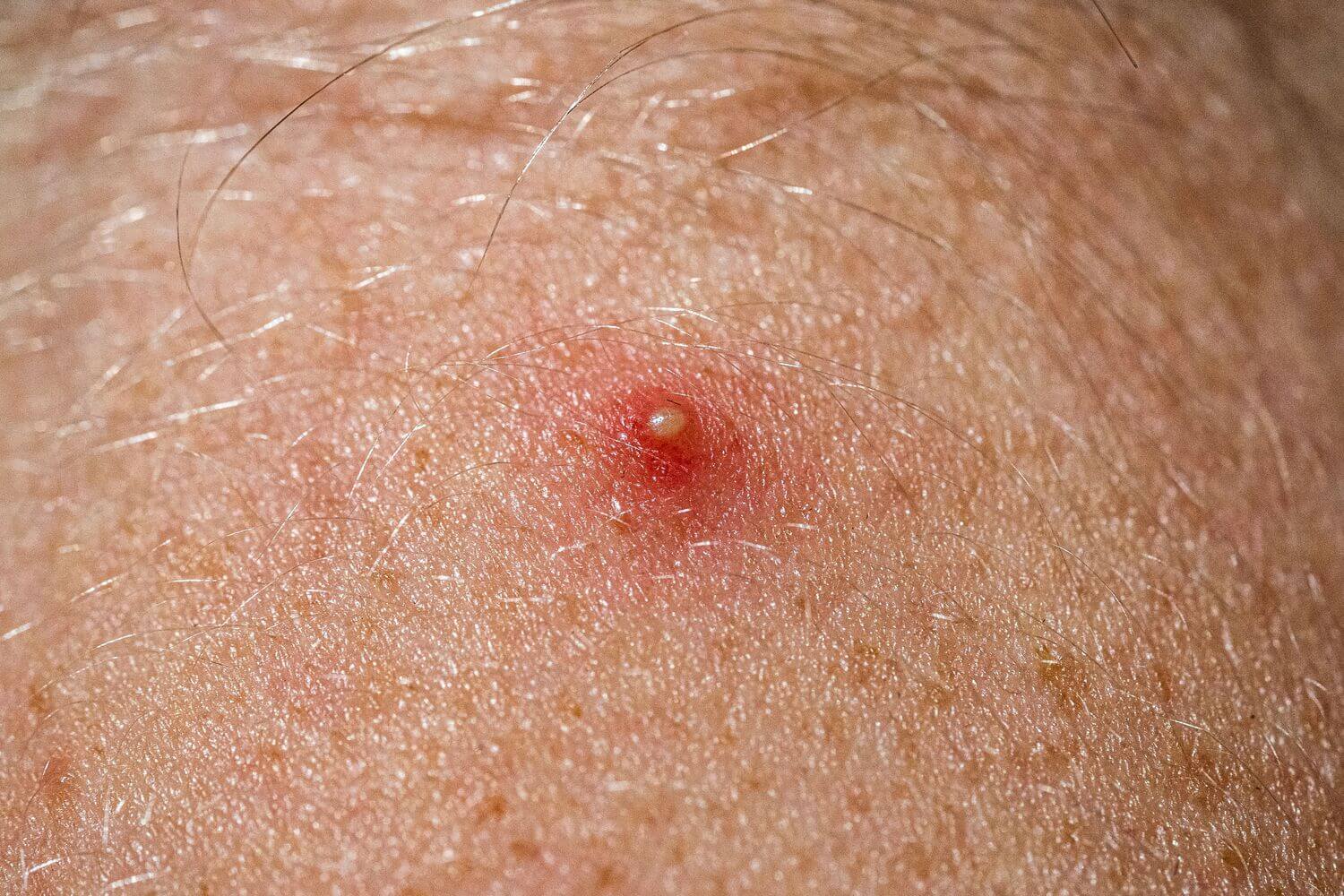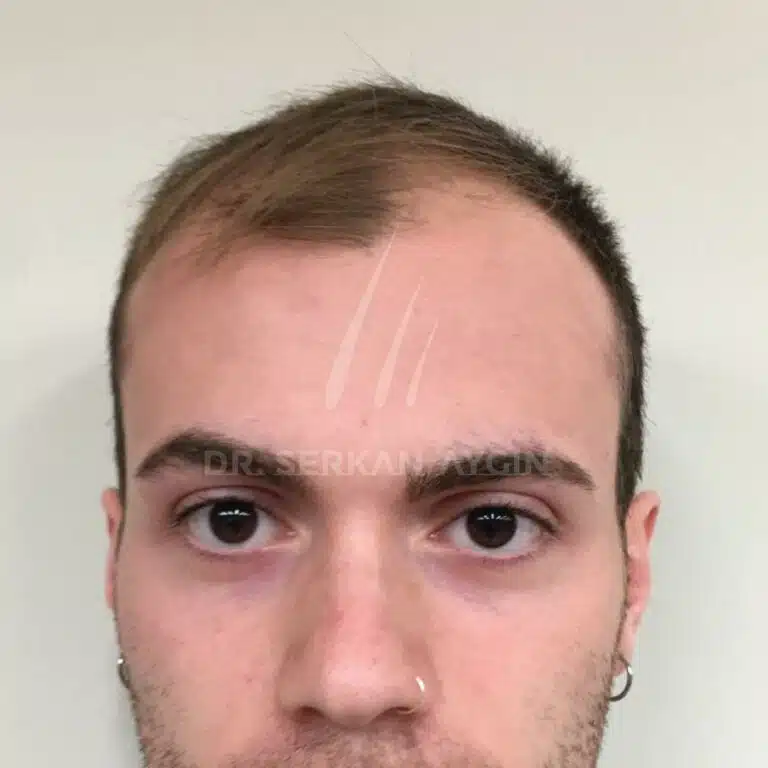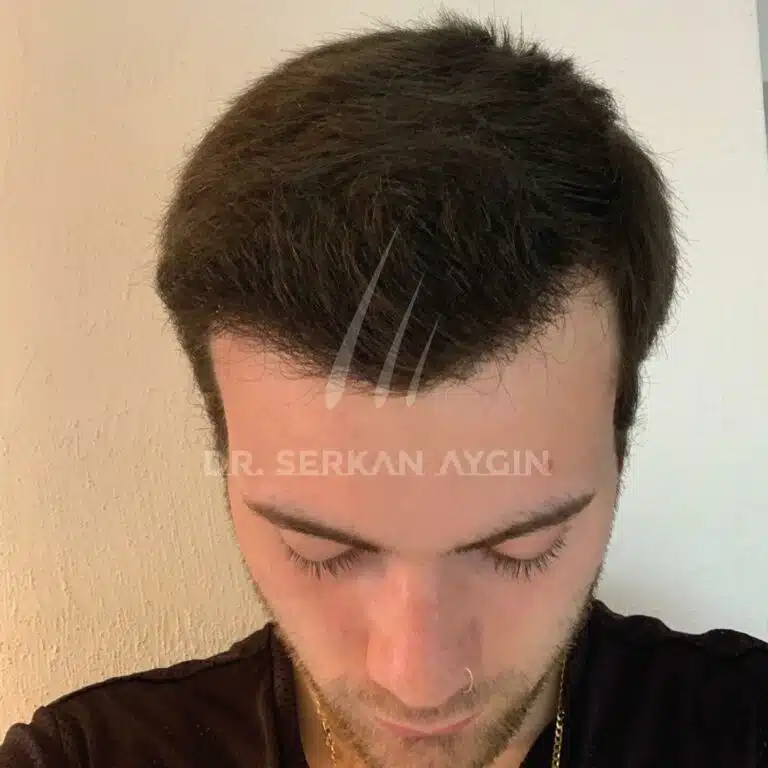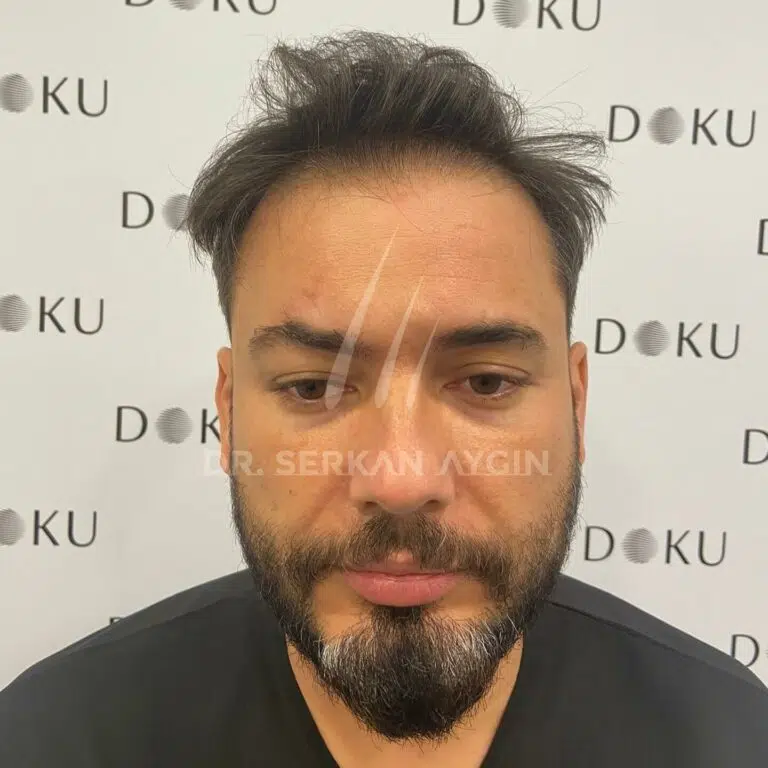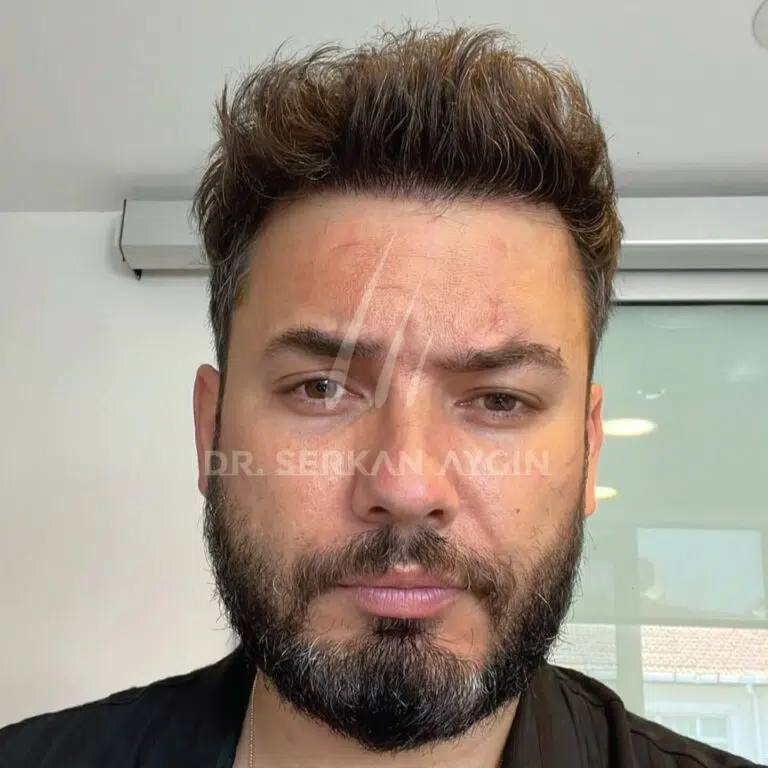Folliculitis is a skin condition that has many different subtypes forming around the body. Folliculitis after a hair transplant can be seen as acne-like small, red, discolored bumps, or pustules that affect your surgery results.
Hair transplant surgeries have a high success rate of up to 95%, but for a few people, folliculitis can be considered one of the common complications. In a survey held for 10 years, out of 2986 people who had hair transplants, folliculitis was seen in 2.8%.
Hopefully, it can easily be cured with proper care and management. We will enlighten you about how to cure it, what to do in case you have it, and protection methods.
Here, some key points from our article are listed:
- FOLLICULITIS IS THE DISTURBANCE OF PLANTED HAIR FOLLICLES
- FOLLICULITIS APPEARS AS RED SMALL BUMPS ON THE RECIPIENT AREA
- ALL HAIR TRANSPLANT METHODS MIGHT CAUSE FOLLICULITIS
- USUALLY IT LASTS AROUND A WEEK AFTER YOU NOTICE AND RESOLVES ITS OWN
- IT IS USUALLY NOT A DANGEROUS COMPLICATION
- UNLESS TREATED IT CAN LEAD TO PERMANENT SCARRING
- YOU CAN PREVENT FOLLICULITIS BY FOLLOWING RECOVERY GUIDELINES
Understanding Folliculitis After Hair Transplant
A hair transplant procedure transplants each follicle of your hair. When they are transplanted, hairs can be a bit exposed to outside dangers. Protecting your hair follicles with basic care and following your doctor’s instructions is important in that case, or else folliculitis might occur.
It can occur after a hair transplant due to bacterial infection or ingrowth of the hair follicles. The bacteria gets under the hair follicles through air or physical touch, or you might have it in your bloodstream.
Folliculitis is actually not a serious condition, and most of the time these small red bumps heal by themselves without any extra care, especially sterile folliculitis.
However, when you do not treat them with the proper care, they can spread and may cause long-term scarring.
What Is Folliculitis?
It is a skin condition that occurs when your hair follicles are disturbed. Folliculitis looks like small bumps or pimples forming around the tiny holes where your hair grows.
There are different types of folliculitis. Commonly known ones are;
- STERILE FOLLICULITIS
- BACTERIAL FOLLICULITIS
- HOT TUB RASH (Pseudomonas)
- RAZOR BUMPS
- PITYROSPORUM
- GRAM-NEGATIVE
Usually, your immune system fights against sterile folliculitis very well, and with basic care, it goes on its own. However, when bacterial infected ones spread and are left untreated this can result in hair loss and scarring.
What Are The Symptoms Of Folliculitis After A Hair Transplant?
After the inflammation of hair follicles, you might notice any of the following:
- SMALL RED BUMPS OR PIMPLES AROUND HAIR FOLLICLES
- ITCHY, PAINFUL, OR SENSITIVE SKIN
- WHITE-HEADED SPOTS OR DARK SCARS
- PUS-FILLED BLISTERS FORMING CRUSTS
Where Does The Hair Folliculitis Occur?
Folliculitis might occur right on the hair transplanted area, around the hair follicles. This place is called the donor area and you might have folliculitis after hair transplant on the scalp, beard, and other body areas.
Which Hair Transplant Procedure Causes Hair Folliculitis?
FUE, FUT or DHI hair transplant surgeries might cause hair folliculitis. They all transplant the hair follicles in the balding areas. If proper care is not given during or after the hair transplant, any of them might result in folliculitis.
Below, you can see hair transplant results of both FUE and DHI techniques.
Which Folliculitis Types Are Expected After A Hair Transplant?
Hair transplant might cause sterile folliculitis and bacterial folliculitis according to the Department of Dermatology, Bangalore Medical College and Research Institute.
Other types of folliculitis like folliculitis decalvans or pityrosporum folliculitis are not related to hair transplant and require different treatments like steroid injections, as they can be chronic diseases.
Why Does Folliculitis Occur After A Hair Transplant
The exact reason for folliculitis varies but in general, it occurs due to the disturbed or improperly planted hair follicles. Here, we listed all the reasons leading to folliculitis:
- UNHYGIENIC AND FAULTY CARE
- ACNE AND OTHER PRIOR SKIN CONDITIONS
- INEXPERIENCED DOCTOR AND CLINIC
- GRAFTS THAT WERE DISSECTED INCORRECTLY
- IMPROPER GRAFT POSITIONING
How Long Does Folliculitis Last After Hair Transplant?
Folliculitis may appear in the first 6 months mark, and with the proper care, it usually lasts around a week. During this time make sure you contact your doctor if you notice any erythema around the planted hair follicles.
Can Folliculitis Occur 2 Months After Surgery?
Folliculitis or pimples can be seen 2 months after surgery and is one of the side effects of the surgery. You do not need to call your doctor for these at first, wait a few days and if you do not see any improvement then you may contact your doctor.
Is Folliculitis After Hair Transplant Dangerous?
No, it is rarely considered dangerous. Either way, let your doctor know if you notice a folliculitis symptom around your planted hair follicles. People achieve satisfying results when the folliculitis is gone on its own, or after the treatment.
Keep in mind that, if your folliculitis is persistent and has bacterial infection, it can spread and ruin the surgery results. Bacterial hair transplant infections are easily treated with topical creams and antibiotics, usually within a week.
Can Folliculitis After A Hair Transplant Lead To Permanent Scarring?
No, folliculitis can easily be cured with prescribed topical creams and antibiotics. When it does not resolve on its own and is left untreated, it can lead to a type of permanent scarring called keloid scarring.
Aftercare Instructions To Prevent Folliculitis Post-Transplant
Choosing a reputable clinic for your surgery is the first thing you should do to avoid having hair folliculitis. However, there are some things to consider after the surgery to prevent folliculitis:
- WASH YOUR HAIR IN THE INSTRUCTED WAY
- DO NOT SCRATCH ITCHY HAIR FOLLICLES
- MAKE SURE THAT YOUR HATS AND COVERINGS ARE CLEAN
- AVOID HEAVY EXERCISES FOR A WHILE, SWEATING INCREASES THE CHANCES
Note: Folliculitis can be seen even when your hair follicles are completely healed and recovery is completed. That’s why keep in mind that shaving in the opposite direction of your beard can cause folliculitis too.
How Can You Take Care Of Curly Hair To Prevent Folliculitis?
Hair transplant patients of curly hair types might need more than regular visits and care, to prevent the ingrowth of hair follicles. It can happen more with curly hair due to the shape of the follicles.
Make sure to check your planted hair for the first weeks to see if there are any ingrown hairs.
How To Treat Folliculitis After A Hair Transplant?
There are many different treatments for folliculitis, depending on how severe it is. First and the basic treatment is time.
Usually, the folliculitis does not require any extra treatment and resolves on its own within time. But to make sure, you need to get it checked and one of these treatments can be used or recommended for you:
- USING A MOIST WASHCLOTH ON THE AFFECTED AREA TO CLEAR OUT THE INFECTION
- TAKING SYSTEMIC ANTIBIOTICS OR APPLYING TOPICAL CREAMS PRESCRIBED BY A DOCTOR
- APPLYING ANTIBACTERIAL SHAMPOOS TO PREVENT INFECTION FROM SPREADING
- USING HISTAMINES FOR ITCHY FEELING AND IRRITATION OF FOLLICULITIS
- HYDROCORTISONE CREAM CAN BE USED FOR SOME FOLLICULITIS TYPES
References:
(1) Sun KL, Chang JM. Special types of folliculitis which should be differentiated from acne. Dermatoendocrinol. 2017;9(1):e1356519. Published 2017 Sep 27. doi:10.1080/19381980.2017.1356519
(2) Garg AK, Garg S. Complications of Hair Transplant Procedures-Causes and Management. Indian J Plast Surg. 2021;54(4):477-482. Published 2021 Dec 31. doi:10.1055/s-0041-1739255
(3) Loganathan E, Sarvajnamurthy S, Gorur D, Suresh DH, Siddaraju MN, Narasimhan RT. Complications of hair restoration surgery: a retrospective analysis. Int J Trichology. 2014;6(4):168-172. doi:10.4103/0974-7753.142861
(4) Risk Factors and Prognosis of Folliculitis at Recipient Sites Following Hair Restoration Surgery Tueboon Sriphojanart, Pasu Piamphongsant, Damkerng Pathomvanich Hair Transplant Forum International May 2020, 30 (3) 85-88; DOI: 10.33589/30.3.85
(5) Al Aboud DM, Badri T. Acne Keloidalis Nuchae. [Updated 2023 Jul 31]. In: StatPearls [Internet]. Treasure Island (FL): StatPearls Publishing; 2023

